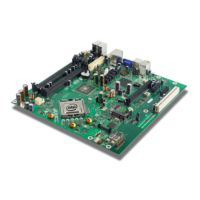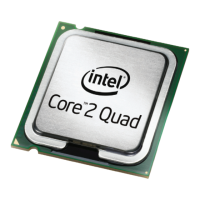Introduction
Development Kit User’s Manual 9
Appendix B, “Rework Instructions” – This appendix contains rework instructions for
the development board and for some of the add-in cards to enable additional
supported features and functionality.
Appendix C, “Programming system BIOS using a flash programming device — This
appendix provides step by step instructions on programming the flash using a flash
programming device
Appendix D, “CPU Thermal Solution (Heatsink) Installation Instructions” — This
appendix gives detailed installation instructions for the Intel
®
Core
TM
2 Duo processor
heatsink.
1.2 Text Conventions
The notations listed in Table 1 may be used throughout this manual.
Table 1. Text Conventions
Notation Definition
# The pound symbol (#) appended to a signal name indicates that the signal
is active low. (e.g., PRSNT1#)
Variables Variables are shown in italics. Variables must be replaced with correct
values.
Instructions Instruction mnemonics are shown in uppercase. When you are
programming, instructions are not case-sensitive. You may use either
uppercase or lowercase.
Numbers Hexadecimal numbers are represented by a string of hexadecimal digits
followed by the character H. A zero prefix is added to numbers that begin
with A through F. (For example, FF is shown as 0FFH.) Decimal and binary
numbers are represented by their customary notations. (That is, 255 is a
decimal number and 1111 is a binary number. In some cases, the letter B
is added for clarity.)
Units of Measure
A
GByte
KByte
KΩ
mA
MByte
MHz
ms
mW
ns
pF
W
V
µA
µF
µs
µW
The following abbreviations are used to represent units of measure:
amps, amperes
gigabytes
kilobytes
kilo-ohms
milliamps, milliamperes
megabytes
megahertz
milliseconds
milliwatts
nanoseconds
picofarads
watts
volts
microamps, microamperes
microfarads
microseconds
microwatts

